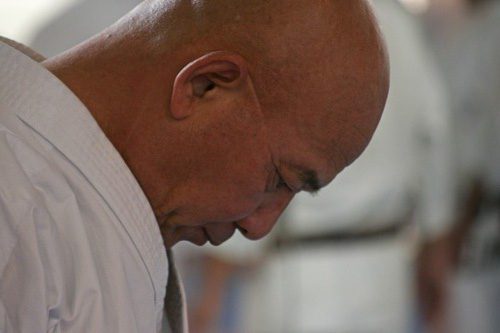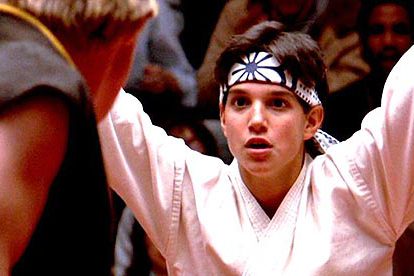This weekend I visited Berlin – the capital of Germany – for the first time.
In case you haven’t been to Berlin, let me tell you something: This city is crazy. Cuh-ray-zee! Not only is the city roughly as big as fifteen regular cities, but the contrasts between old and new, east and west, fancy and dirty etc. are simply astonishing. As I later found out, most citizens of Berlin rarely even leave their ‘own’ part of the city – it’s just too time-consuming!
Anyway, as always when you visit new places, you gotta check out the most famous sights… right?
Of course.
So, in this case, I visited…
(You guessed it!)
For those of you who slept during high school history class, the rise and fall of the infamous Berlin Wall is (was) basically this: On August 13, 1961, the Communist government of the German Democratic Republic (GDR, or East Germany) began to build a huge barbed wire/concrete ‘Antifascistischer Schutzwall’, or ‘antifascist defense wall’, between East and West Berlin – including armed guard towers, anti-vehicle trenches, a ‘death strip’ and such evil things. The official purpose of this Berlin Wall was “to keep Western fascists from entering East Germany and undermining the socialist state”, but it primarily served the objective of stemming mass defections from East to West.
To make a long story short, the Berlin Wall stood until November 9, 1989, when the head of the East German Communist Party announced that citizens of the GDR could cross the border whenever they pleased. That night, ecstatic crowds swarmed the wall and tore it down. Some crossed freely into West Berlin, while others brought hammers and picks and began to chip away at the wall itself. To this day, the Berlin Wall remains one of the most powerful and enduring European symbols of the Cold War, and the people who died for it.
With that being said, let’s now go on to the Karate connection.
(There’s always a Karate connection).
You see, as I visited the three main places of Berlin City where large chunks of the wall can still be seen for tourists, I began to think about how this whole Berlin Wall phenomenon relates to our beloved art of Karate. I mean, don’t we have this large ‘barrier’ in Karate too? A metaphorical ‘wall’ which separates the ‘east’ Karate world from the ‘west’? An obstacle that separates the ‘traditional’ Karate world from the ‘modern’ Karate world?
You bet we have.
It’s called “kata”.
Dear old kata…
See, just like Moses (dividing the Biblical Red Sea), kata seems to be our modern day Karate equivalent of a divider between two huge groups of passionate Karate practitioners:
- People who don’t “get” kata.
- People who “get” kata.
In other words, each and every Karate-ka in the entire Karate world belongs to one of these two categories – whether they realize it or not. At least in my book.
To make things clearer, allow me to explain.
Listen:
1. People who don’t “get” kata.
This is the first group of people found in Karate – often mistakenly described as “modernists”; effortlessly throwing around standard phrases like “Karate should be more practical”, “that would never work on the ‘street'” or “c’mon you lazy bastard, give me fifty more push-ups!”. You know the type, they’re found in every dojo around the world.
And the funny thing is, they’ll quite willingly admit that they really don’t “get” this whole kata thingy.
In short, they simply don’t understand why you have to practise it!
(And sure, I can see why.)
These people, and I’m not denying the fact that you might actually be one of them, will only – and often reluctantly – practise their kata either when they have a grading coming up, if they have to teach it to somebody else, or if their sensei tells them to practise it. And that’s about it.
To them, kata it is nothing but a traditional way of just “warming up”, before moving on to the “real” meat and potatoes of their Karate (which ranges from sparring and self-defense to physical conditioning, kumite, pad work, ancient Karate concepts of kicking ass, etc). Still, when they perform a kata, they’ll often do it to the best of their abilities – sometimes with surprisingly quick and powerful techniques…
But they don’t really get any satisfaction from doing more than a few kata.
Why?
Simple.
Because they don’t understand kata.
And they honestly don’t see the point of doing it!
The thing is, you can’t blame them – nobody likes to do stuff they don’t understand for very long! I don’t. You don’t. Your sensei doesn’t.
Heck, even Einstein didn’t.
“Insanity is doing the same thing over and over; expecting a different result.”
– Albert Einstein
The problem lies in the fact that nobody has ever taught these unfortunate Karate-ka just exactly what, why and how a true kata is supposed to be performed studied. Hence, to them, a kata forever remains just a ‘traditional’ bunch of punches, blocks, kicks, strikes and stances performed in ‘thin air’ with seemingly no other real purpose than to break a sweat, follow our beloved “tradition” or please a sensei/grading committee/judges. It’s okay to do a few times, sure, but more than that feels like a waste of time. It’s just not essential to their Karate!
I personally know a lot of folks who fit into this category, and I regularely teach a lot of people in this category too. I know exactly how they feel, because each training session is a constant battle in convincing them why kata is in fact the essence and foundation of traditional Karate.
But they’re not entirely hopeless.
They’re just clueless.
And as such, I consider it the duty of people in the second category (which I’ll explain in a sec) to tirelessly break the barrier of Karate by storming the “wall” of kata as often as humanly possible – educating these unfortunate people about the true informative, physical, psychological, scientifical, historical and cultural values inherited in our kata.
Naahimean?
So let’s check out the second category of Karate practitioners then – which I truly hope you will consider belonging to.
Here:
2. People who “get” kata.
Now, people of this second group, who “get” kata, have no magical abilities or significant skills/talents over the first group. They really don’t.
All they have is a good, solid, basic understanding of Karate (most likely built by an awesome sensei).
You see, these people, one way or other, somehow seem to”get” what this whole kata thingy is all about.
(Needless to say, they are probably the same ones who would have tore down the Berlin Wall, had it still been here today!)
People who “get” kata, who understand the purpose of it, find immense joy in using it for what it is: A mental, spiritual and physical tool, created with the main purpose of remembering and reenacting a bunch of highly effective fighting templates carried out in self-defense against would-be attackers, as codified by the masters of old. Like Shito-ryu Karate founder, the legendary Mabuni Kenwa, so precisely put it in his pioneering work Kobo Jizai Goshin-jutsu Karate Kenpo (1934):

“The Karate kata are living creatures […]. If a kata is deeply understood, and thoroughly practised, its spirit will enter the person and appear as a living creature expressed by this person. Often one can see how a kata is enjoying life. In this way, a kata is a living thing. […] The more one understands and practises a kata, the greater the benefits for body and soul will be.”
– Mabuni Kenwa
To people who belong to this group of Karate-ka, kata is considered the “complete package” – holding so many inherited lessons that the study of anything else in modern Karate (like kumite, supplementary training, warm-up etc) sometimes even takes second place! These people have somehow understood that a kata is a whole fighting system in itself, and by gradually analyzing, testing, repeating and applying the different parts of a kata one is steadily building a 360 degree Karate Nerd™ understanding of what real “kill-or-be-killed” Karate was originally all about.
That’s what these people “get”.
They get that you don’t have to reinvent the wheel.
So why don’t YOU “get” it too?
Sure, in a world where you can Google or Youtube dubious “five second death touch knockout” -lessons online faster than it takes to tie your Karate belt, going through the arduous task of deciphering an ancient kata seems borderline insane at times.
I fully agree.
That’s why it’s of paramount importance for you to understand that the true study of kata lies not only in digging out the bunkai (applications) of the actual moves, but in discovering and subsequently experiencing that kata ultimately offers more than the sum of its mere physical parts.
No, the masters never said it would be easy.
Just that it would be worth it.
So…
Which category do YOU belong to?
Prove it.




28 Comments